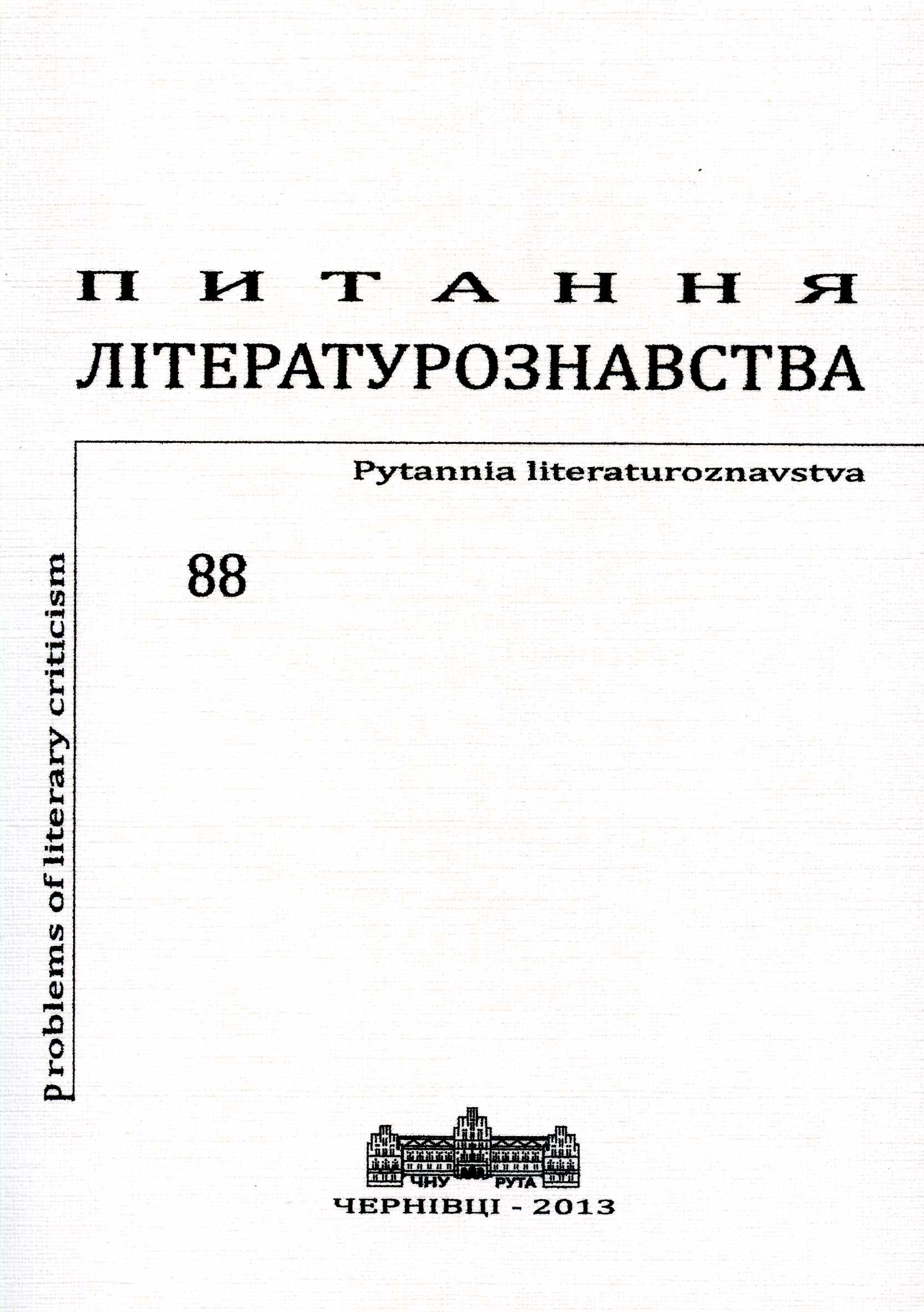Типологія письменницького статусу: два досвіди – Ч. Мілош та Ґ. фон Реццорі
Typology of the Author's Status: Two Experiences – Cz. Miłosz and G. von Rezzori
Author(s): Tetiana BasniakSubject(s): Language and Literature Studies, Studies of Literature, Polish Literature
Published by: Чернівецький національний університет імені Юрія Федьковича
Keywords: G. Von Rezzori; “The Snows Of Yesteryear” (“Blumen im Schnee”); Cz. Miłosz; “The Issa Valley” (“Dolina Issy”); typological parallels; topos of childhood; multinational palette;
Summary/Abstract: A number of typological coincidences in the texts of the Polish-American writer Cz. Miłosz, a Nobel prize winner and German classic G. Von Rezzori are considered. The work of these authors is a result of the crisis of the twentieth century, tragic decline of the traditional culture that was associated with the status of a writer in exile. Biographical background appears very organic for their texts , and in this case it almost coincides: the parents of both future artists “temporarily” left their land when the the situation in the empires was not stable – the Austria-Hungarian (in the case of Rezzori ) and Russian ( in the case of Miłosz). Both writers lived in exile. In their opinion, topos of childhood tragically detached from the future life events, generated separate thematic and anthropological link in their creative work . In this sense “The Issa Valley” (“Dolina Issy” 1955) by Cz. Miłosz and “The Snows Of Yesteryear” (“Blumen im Schnee” 1989) by Rezzori are the most exemplary. The works of a number of other representatives of the European literature of the twentieth century (e.g., “Others shores” by V. Nabokov ). The problem discussed is still relevant. Tendence to autobiographism as genre sign of their texts, and, in addition, the source of many images – primarily children and adolescent characters is evident. The most obvious typological parallels emerge in several dimensions: the perspective of ideological clichés (negation Nietzschean ideas of nihilism by each writer), specific system of images (including images of nannies Cassandra and Antonina), relection the typical paradigm , which presents a complete image of “the world of childhood”, besides – in relation to the issue of “language as poetic phenomenon” (Miłosz’s definition), that mirrors the multinational palette the lost homeland.
Journal: Питання літературознавства
- Issue Year: 2013
- Issue No: 88
- Page Range: 22-33
- Page Count: 12
- Language: Ukrainian

